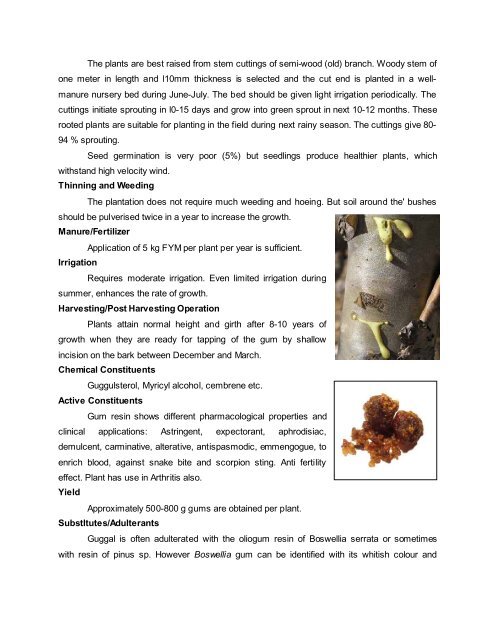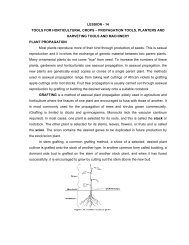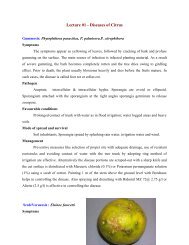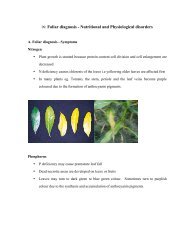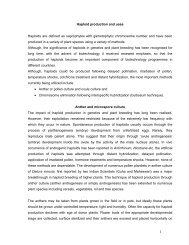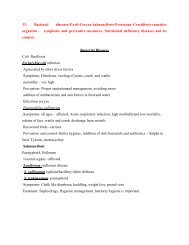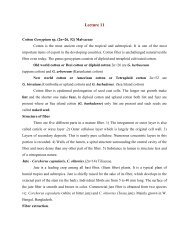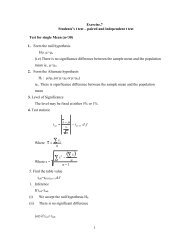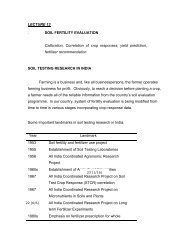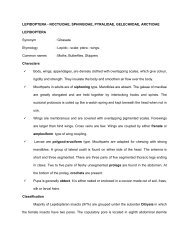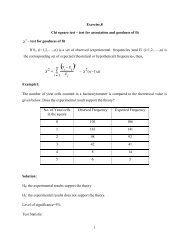Download this lecture as PDF here - TNAU
Download this lecture as PDF here - TNAU
Download this lecture as PDF here - TNAU
Create successful ePaper yourself
Turn your PDF publications into a flip-book with our unique Google optimized e-Paper software.
The plants are best raised from stem cuttings of semi-wood (old) branch. Woody stem ofone meter in length and l10mm thickness is selected and the cut end is planted in a wellmanurenursery bed during June-July. The bed should be given light irrigation periodically. Thecuttings initiate sprouting in l0-15 days and grow into green sprout in next 10-12 months. Theserooted plants are suitable for planting in the field during next rainy se<strong>as</strong>on. The cuttings give 80-94 % sprouting.Seed germination is very poor (5%) but seedlings produce healthier plants, whichwithstand high velocity wind.Thinning and WeedingThe plantation does not require much weeding and hoeing. But soil around the' bushesshould be pulverised twice in a year to incre<strong>as</strong>e the growth.Manure/FertilizerApplication of 5 kg FYM per plant per year is sufficient.IrrigationRequires moderate irrigation. Even limited irrigation duringsummer, enhances the rate of growth.Harvesting/Post Harvesting OperationPlants attain normal height and girth after 8-10 years ofgrowth when they are ready for tapping of the gum by shallowincision on the bark between December and March.Chemical ConstituentsGuggulsterol, Myricyl alcohol, cembrene etc.Active ConstituentsGum resin shows different pharmacological properties andclinical applications: Astringent, expectorant, aphrodisiac,demulcent, carminative, alterative, antisp<strong>as</strong>modic, emmengogue, toenrich blood, against snake bite and scorpion sting. Anti fertilityeffect. Plant h<strong>as</strong> use in Arthritis also.YieldApproximately 500-800 g gums are obtained per plant.Substltutes/AdulterantsGuggal is often adulterated with the oliogum resin of Boswellia serrata or sometimeswith resin of pinus sp. However Boswellia gum can be identified with its whitish colour and


